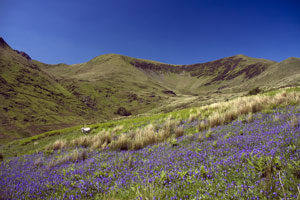But there is another side to her: Vera is an environmental chemistry lecturer at Bangor University and she’s been studying the composition of bluebell seeds, together with Patrick Murphy and colleagues, to determine how they could be used in the future.
With an eye to this, the team determined the fatty acid composition of the seeds using 1H and 13C NMR and GC-MS. The seed oil is highly unsaturated (>85%), contains 20% gondoic acid (cis-icos-11-enoic acid, which is found in fish and vegetable oils) and an unusually high proportion of fatty acids with 20 or more carbon atoms. This particular composition indicates that one application of the seeds could be as a biodiesel source, they say.
Link to journal article
Triacylglycerol Composition of British Bluebell (Hyacinthoides non-scripta) Seed Oil
Vera Thoss , P J Murphy , Ray John Marriott and Thomas Wilson
RSC Adv., 2012, Accepted Manuscript, DOI: 10.1039/C2RA20090B











